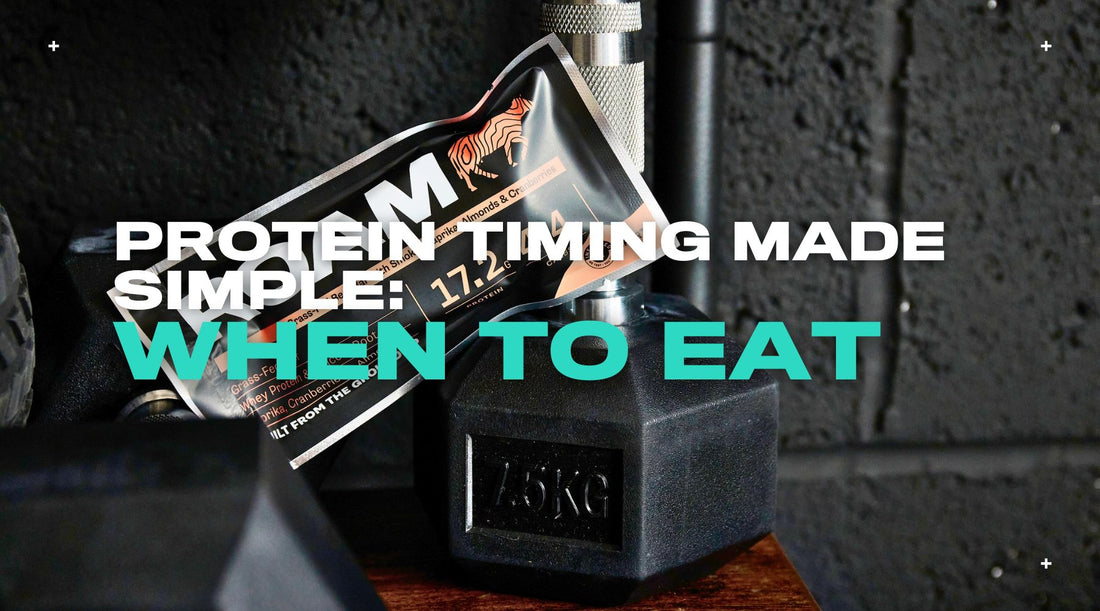
Protein Timing Made Simple: When to Eat for Strength, Endurance & Recovery
Your daily total matters most | But timing gives you an edge.
Protein timing isn’t magic, but it’s meaningful. If you hit your daily protein target and distribute it evenly, you’ll likely build/maintain more lean mass and recover faster. Add strategic timing around training and sleep, and you turn a good diet into a great one.
First principles of protein timing
Daily target: 1.2–2.2 g/kg, scaled to match training volume & activity levels.
Even distribution: 3–5 feedings of 20–40g each.
Anchor windows: Pre‑training, post‑training, and pre‑sleep.
Read more in‑depth: High‑Protein Eating in the UK →
 Pre‑training (30–120 mins)
Pre‑training (30–120 mins)
- You want digestible protein + modest carbs, low fibre/fat.
- Examples: Roam bar + rice cakes; yoghurt + banana; oats + clean whey.
- Why: Amino acids are available during the session; carbs support output.
Post‑training (0–60 mins)
- Aim for 20–30g protein + 30–50g carbs.
- Examples: Roam bar + dates; eggs on toast; cottage cheese + cereal/fruit.
- Why: You’ll support muscle protein synthesis and refuel glycogen efficiently.
Pre‑sleep (about 60 mins)
- A slow, protein‑rich snack improves overnight recovery and sleep quality.
- Examples: Roam bites; Greek yoghurt + seeds; small turkey roll‑ups.
- Why: You extend the recovery window and reduce night‑time awakenings from blood sugar dips.
Read more in‑depth: Real Recovery Starts with Food →

Timing for different goals
Strength focus:
Emphasise post‑training 30–50g carbs with your protein to drive adaptations.
Endurance focus:
Add a small mid‑session carb for >60 min sessions; maintain protein across the day.
Fat‑loss focus:
Keep snacks protein‑forward; time carbs around training for performance.
Mistakes to dodge
- Skipping pre‑sleep protein—a missed recovery opportunity.
- Only drinking sugary shakes; favour real‑food protein (Roam) for better satiety and fewer additives.
- Front‑loading all protein at dinner; spread it for best results.